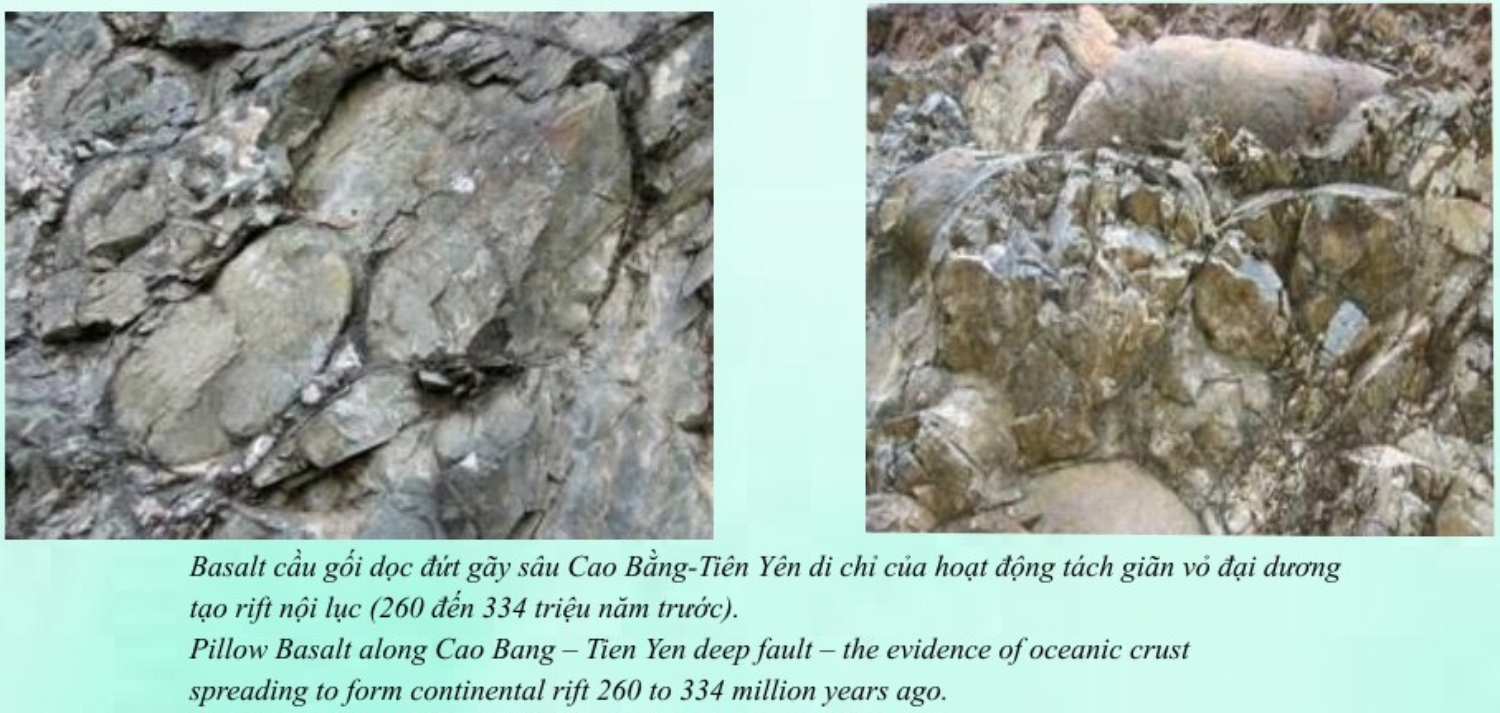PILLOW BASALT ALONG CAO BANG-TIEN YEN DEEP-SEATED FAULT

On the Khau Khoang Mountain Pass, Cam Khang Commune, Thach An District, there is a beautiful outcrop, which shows the stratigraphic unconformity between Devonian and Triassic formations and pillow basalt. Therein, patchy medium-bedded limestone of the Na Quan Formation (D1-2nq) are brecciated and boudinage deformed (boudinages of few tens centimeters in size), overlain by dark colored clay and silica shale intercalating with purple-colored, medium-bedded silty sandstone of the Song Hien Formation (T1sh), all together striking 270Ð50o. The shales and siltstones were plastically deformed into the scabbard folds. The overlying bed is dark grey, dark blue, greenish grey pillow basalt of different sizes, scatteredly distributed and weakly oriented. The pillow basalt bed is locally flat compressed, brecciated, or altered into chlorite, broken up by conjugate fractures and fracture surfaces of 110Ð35o, showing sub-meridian fault. Around the outcrop, there is top-bottom karst cluster in limestone landform and denudation topography with hilly terrain on shale, basalt, etc. Landforms are dissected by cleft and canal erosion and saddle on fracture zone caused by faults.
The unconformable boundary between Devonian and Triassic formation indicates the spreading activities between the North Vietnam and South China micro-plates, forming Paleo-Tethys continental rift, with the bottom composed of Devonian limestone and unconformably covered by early Triassic continental deposit, acidic extrusion and tuff. The boudinage and fold structures indicate the ductile deformation during deposition of Devonian sediments, and striation, fracture, breccias indicated brittle deformation in Kainozoic tectonics. Pillow basalt is the evidence of effusion at the ocean floor due to ocean crust spreading in Carboniferous (334 million years) (Tran Thanh Hai, 2007 [35]; and late Permian-Early Trias (Ngo Xuan Thanh et al, 2015 [19], 263 million years; Halpin et al, 2015 [16], 260 million years), and then the movement and extrusive tectonic activities (Metcalfer, 2013 [15]) along the Cao Bang-Tien Yen deep-seated fault caused pillow basalt to go up to be ductily deformed during this period, and then are fractured, compressed in neotectonic period.
Source: BQL
Reader Comments
Newer articles
Older articles


